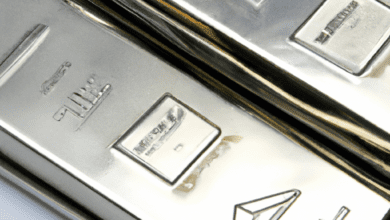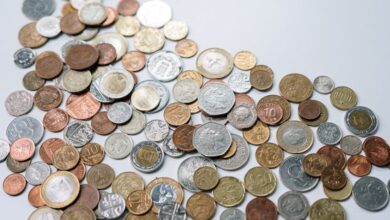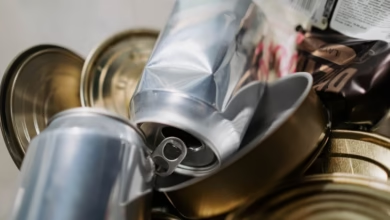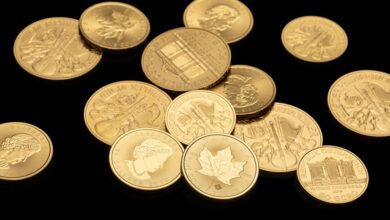Metals in Motion: Analyzing Industrial Demand, Investment Trends, and Economic Indicators

In an increasingly complex and interconnected global economy, the role of metals has never been more critical, serving both as essential components in industrial applications and as attractive investment options for portfolio diversification. This article delves into the multifaceted nature of metals, focusing on key players such as silver, copper, rare earth elements, platinum, palladium, and aluminum. Each section explores how these metals are influenced by economic indicators, technological advancements, and regulatory frameworks, while also addressing their unique positions in the investment landscape. From the industrial versatility of silver to the economic barometer that copper provides, we will analyze how inflation impacts prices and the future of aluminum in a sustainable economy. Join us as we navigate the dual landscape of metals, uncovering the opportunities and challenges that lie ahead in both industrial and investment markets.
- 1. "Navigating the Dual Landscape: Silver's Industrial Versatility and Investment Appeal"
- 2. "Economic Indicators: Understanding Copper Prices as a Barometer for Global Health"
1. "Navigating the Dual Landscape: Silver's Industrial Versatility and Investment Appeal"
Silver occupies a unique position in both the industrial and investment markets, making it a versatile asset that appeals to a broad range of stakeholders. On the industrial side, silver is renowned for its exceptional conductivity, thermal properties, and resistance to corrosion, which have led to its widespread use in electronics, solar panels, and medical devices. As industries increasingly adopt advanced technologies, the demand for silver in applications such as electric vehicles (EVs) and renewable energy systems continues to grow, contributing to its status as a critical industrial metal.
In contrast, silver's investment appeal is bolstered by its historical role as a store of value and a hedge against inflation. Investors often view silver as a safe haven during economic uncertainty, similar to gold. The metal's relatively lower price compared to gold makes it more accessible for smaller investors, further enhancing its attractiveness. Additionally, the emergence of silver-backed exchange-traded funds (ETFs) has simplified the process of investing in silver, allowing investors to gain exposure without the need for physical storage.
Navigating the dual landscape of silver requires an understanding of the interplay between its industrial and investment roles. Economic trends, such as increased manufacturing activity or shifts toward green technologies, can significantly influence silver's price dynamics. Conversely, investor sentiment—driven by factors like inflation rates and global economic stability—can also impact demand and pricing. As such, silver represents a compelling opportunity for those looking to diversify their investment portfolios while also engaging with a metal that plays a vital role in modern industry.
Silver plays a multifaceted role in both industrial and investment markets, acting as a critical component in various applications while also serving as a store of value for investors. In the industrial sector, silver is valued for its exceptional conductivity, thermal properties, and resistance to corrosion, making it indispensable in electronics, solar panels, and medical devices. As industries continue to innovate, particularly in renewable energy technologies, the demand for silver is expected to rise, further cementing its significance.
In terms of investment, silver is often perceived as a safe haven asset, similar to gold, particularly during times of economic uncertainty or inflation. Investors may turn to silver to hedge against currency devaluation and market volatility. This duality of function—both as an industrial commodity and a precious metal for investment—illustrates silver's unique position in the market.
Copper prices serve as a bellwether for global economic health, reflecting the dynamics of supply and demand across various sectors. As a key material in construction, manufacturing, and electrical wiring, fluctuations in copper prices often indicate broader economic trends. When copper prices rise, it may signal increased industrial activity and economic growth, while a decline could suggest a slowdown or contraction.
The rise of green energy technologies is significantly influencing demand for rare earth metals, which are essential for the production of electric vehicles, wind turbines, and energy-efficient appliances. As governments and industries push towards sustainable practices, the need for these metals is expected to surge, potentially leading to supply constraints and increased prices.
When comparing platinum and palladium as investment options, several factors come into play. Historically, platinum has been favored for its rarity and use in jewelry, while palladium has gained prominence due to its essential role in catalytic converters for gasoline engines. Each metal has its market dynamics, with palladium prices experiencing significant increases in recent years, largely driven by demand in the automotive sector.
Investors often consider metals as a means to diversify their portfolios, as they can provide a hedge against inflation and currency fluctuations. Precious metals, such as gold and silver, as well as industrial metals, like copper and aluminum, offer varying benefits, with each metal responding differently to market conditions.
Inflation tends to impact the prices of both precious and industrial metals. During inflationary periods, the purchasing power of currency declines, prompting investors to seek tangible assets like metals. Consequently, prices for these commodities often rise as demand increases. Additionally, the cost of mining and production can also be affected by inflation, further influencing metal prices.
Looking ahead, aluminum is poised to play a crucial role in a sustainable economy, particularly due to its lightweight properties and recyclability. As industries seek to reduce their carbon footprints, aluminum's application in transportation, construction, and packaging is likely to expand.
Finally, mining regulations can significantly impact metal prices by influencing supply dynamics. Stricter regulations can lead to increased operational costs and delays in production, potentially limiting the availability of certain metals on the market. Conversely, relaxed regulations may enhance production capabilities but could also raise environmental concerns, creating a complex interplay between regulation, supply, and prices.
2. "Economic Indicators: Understanding Copper Prices as a Barometer for Global Health"
Copper prices are often viewed as a crucial economic indicator, reflecting the health of the global economy. This is largely due to copper's widespread use in various industries, particularly in construction, electronics, and infrastructure development. As a fundamental raw material, copper's demand tends to rise in tandem with economic growth. When economies are thriving, businesses ramp up production, leading to increased orders for copper, which in turn drives up its price.
Conversely, during periods of economic downturn or uncertainty, demand for copper typically declines, causing prices to fall. This correlation can be attributed to the metal's sensitivity to changes in industrial activity. For instance, a slowdown in manufacturing or construction projects can signal a broader economic malaise, subsequently reflected in lower copper prices.
Additionally, copper prices can also respond to geopolitical events, trade policies, and supply chain disruptions. For example, tariffs imposed on copper imports or mining strikes in major producing countries can lead to price volatility, further emphasizing the metal's role as an economic barometer. Analysts and investors closely monitor these fluctuations, as they can provide insights into future economic trends.
Moreover, the rise of emerging markets, particularly in Asia, has further influenced copper demand and pricing. As countries like China and India continue to urbanize and industrialize, their appetite for copper has surged, reinforcing its status as a critical indicator of global economic health. Overall, by analyzing copper price trends, stakeholders can gain valuable insights into both current market conditions and future economic prospects.
In conclusion, the multifaceted role of metals in both industrial applications and investment portfolios underscores their significance in today's economy. Silver, with its unique combination of industrial versatility and investment allure, exemplifies how metals can serve dual purposes. Similarly, copper prices act as a reliable indicator of global economic health, reflecting the ebb and flow of market activity and consumer demand.
As we pivot towards greener technologies, the demand for rare earth metals is expected to surge, highlighting the importance of sustainable practices in mining and resource management. The ongoing debate between platinum and palladium as investment choices further illustrates the nuanced dynamics within the precious metals market, influenced by factors such as supply constraints and shifting automotive demands.
Moreover, the role of metals in diversifying investment portfolios remains vital, especially in the face of inflationary pressures that can distort traditional asset values. Aluminum's future in a sustainable economy appears promising, driven by its recyclability and essential role in green initiatives.
Lastly, the impact of mining regulations on metal prices cannot be overlooked, as these policies shape supply chains and market stability. As investors and industries navigate these complexities, understanding the interplay between economic indicators, technological advancements, and regulatory frameworks will be crucial in making informed decisions about metal investments. The evolving landscape of metal markets presents both challenges and opportunities, emphasizing the need for a strategic approach in harnessing their potential for economic growth and sustainability.





